Drum Set Part Names There are many parts to a drum set. Some drum set parts have 2-3 names for the same part. Lets take a look! The Drum Set Our instrument the “Drum Set” has a few names. Drum set, (most common) Drum kit, (kit for short) Trap kit, (really old...
Drums LessonsParts Of A Drum Set
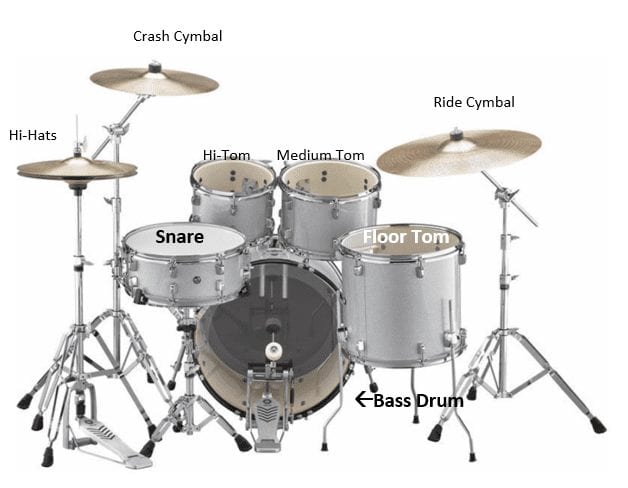
Drum Set Part Names
There are many parts to a drum set. Some drum set parts have 2-3 names for the same part. Lets take a look!
The Drum Set
Our instrument the “Drum Set” has a few names.
- Drum set, (most common)
- Drum kit, (kit for short)
- Trap kit, (really old term:)
Drum Set Part Names
The Bass Drum
I always call it the bass drum, but here is an alternate name…
- Kick drum
Snare Drum
(alternate name)
- Snare, (for short)
High-tom
The most common name is the hi-tom, but here are alternate names for the instrument.
- Tom 1
- Rack 1
Medium tom
Medium tom and middle tom are the most common names for this drum.
(alternate names)
- Middle tom
- Tom 2
- Rack 2
Floor tom
Floor tom and low tom are above even in the name of this voice of the instrument.
(alternate names)
- Low tom
- Tom 3
Names Of Cymbals
The cymbal family consists of many types of cymbals. From really small cymbals to very large cymbals and special effects cymbals.
Most commonly used cymbals.
I would recommend going to you local music store and checking out each one. First go through each family, (hi-hat), and try as many different sizes and brands as you can. You begin to develop a taste of what you like and don’t like.
Here are the names:
- Hi-Hat
- Crash cymbal
- China cymbal
- Ride cymbal
- Splash
Some larger cymbals, that are mostly used in orchestral music, can also be found behind a drum set
- Tam-Tam
- Gong
Most common drum set combinations
What are the five main parts of a drumset?
- Bass Drum
- Snare Drum
- Hi-Tom
- Medium Tom
- Floor Tom
The most common drum set combination is a 5pce Drum Set.
5pce refers to the number of drums, NOT including the cymbals.
Bass drum, snare, hi-tom, medium tom, floor tom
Here are the drum set part names for a 5pce drum set.

The 5pce drum set is the most common drum set combination, and is widely used on all types of music.
The second most common drum set up would be a 4pce Drum Set, or what is sometimes referred to as a “Jazz Kit”.
Bass drum, snare, hi-tom, floor tom
Here are the drum set part names for a 4pce drum set.
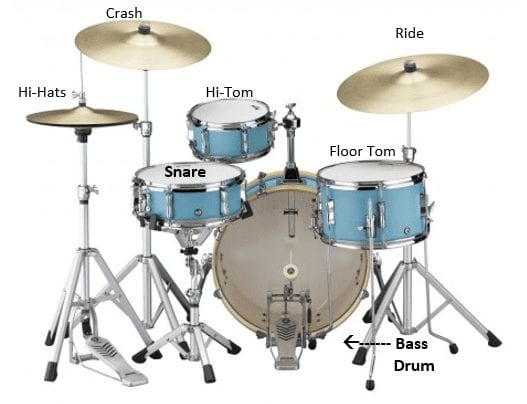
Although mostly associated the jazz drummers, the 4pce kit was also largely adapted by rock drummers as well. A short list being John Bonham and Dave Grohl.
The monster kit!!
Well, this is really not that big of a kit, but it does have more toms than a regular setup does.
Here are the drum set part names for a large drum set setup.
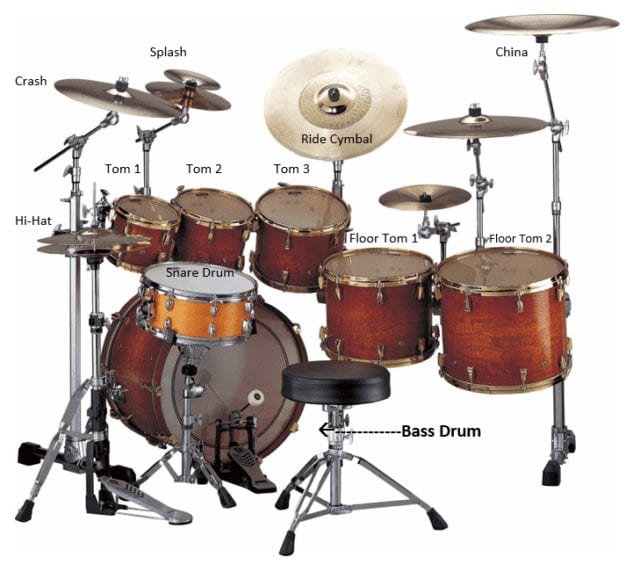
Some names that come to mind when we think of “monster” kits are Neil Peart, Terry Bozzio, Mike Mangini and Mike Portnoy.
Kenny Aronoff Kit – Stepping outside of the box
I love Kenny’s kit. He has flipped his toms around so that his small tom, (hi-tom), is where the medium tom usually is, and…his floor tome sizes are flipped. I would recommend everyone give this a try to have you exit your comfort zone. By doing this you will be forced to think more creatively and you will be more aware of what you are playing and hitting, (instead of being on autopilot).

Not sure if drums are for you? Try out a few lessons, or rent a drum set!
Other Drum Parts – Nitty Gritty!
Tension Rods
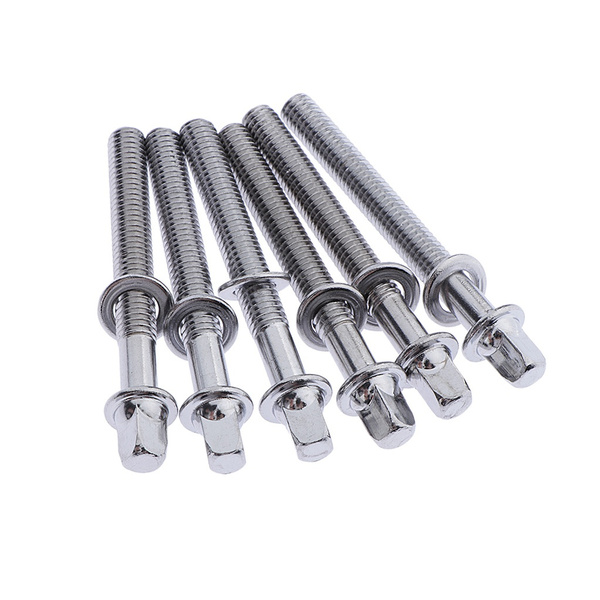
Tension rods look like screws with flat ends that are located at the side of your drum that go through the holes in your drum hoop into the lug.
The purpose of a tension rod is to tighten the drum head firm around the drum shell edge and give you the pitch you desire. By turning the rod with your drum key clockwise, you tighten the drum, making the pitch higher. If you turn the tension rod counter-clockwise, you loosen the head, making the pitch lower.
You want to follow a tuning guide to ensure a balance/even tuning process, (also making sure the hoop doesn’t crack).
Maintaining
By ensuring the tension rods are greased, (slide grease or Vaseline), and go straight into the lug, (not on an angle), you can reduce the chances of the tension rod stripping or damaging the lug. If you notice that some or one of your tension rods are bent, it’s time to replace them!
Some bass drum tension rods, instead of having an end that you would need a drum key for, will have a T-handle that you can simply turn by hand to tune the pitch of the drum.
Tuning Basics
With the bass drums, generally it’s fairly loose. Start off by loosening all the rods until they all move feely. You would then hand heighten all the rods, then give each rod a ¼ – ½ turn with your tuning key, (or by hand if T-handle), following one of the tuning guide methods.
With the snare drum, generally the tension rods are fairly tight. Loosen all the tension rods until loose. Then hand heighten all the rods followed by turning each one ¼ – ½ turn with your drum key, following one of the tuning guide methods. You would follow this method around the drum 2-4 times, or more, depending on the pitch you have in mind or want to achieve.
Drum Lugs

Lugs are metal casings located on the side of a drum shell. The tension rod that goes through the hole in the hoop is screwed into the lug to tighten the drum head.
Some drum shells have a single lug that causes both tension rods for top and bottom head. Other drums will have 2 lugs, (one for the top head and for the bottom).
Simply by wiping and cleaning the lugs periodically and ensuring the tension rods have a bit of slide grease or Vaseline on them, you can dramatically reduce wear.
Drum Badges
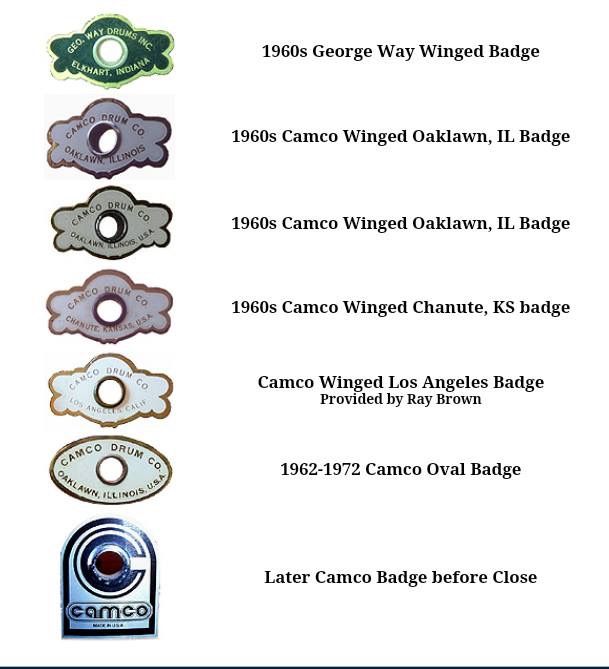
Drum badges come in a variety of different shapes and sizes. The main purpose of a drum badge is to acknowledge the name of the drum company. But sometimes it serves a dual purpose. Some drum badges also have a hole that goes through the badge and through the drum shell. In this case, it’s also being used as an air vent.
Washers
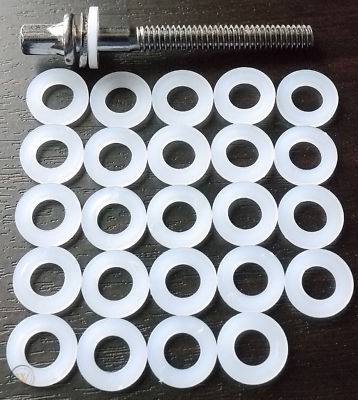
Washers are used throughout the whole drumset. From hardware to tension rods. With tension rods, the washers are placed between the head of the tension rod and the rim of the drum. Because the hole in the rim/hoop may be a little larger than the tension rod head, (or exact size), this helps to make better contact.
In the case of tension rods, most washers are metal. If you are hearing metal against metal noise you might want to swap your metal washer for plastic ones.
For cymbal stands, big washers are sometimes used before the placement of the cymbal sleeve, where the cymbal slides into. So, you have the washer, cymbal sleeve and the felt that slides onto it.
Other places where you will see washers are the bass drum spurs, tom arm adjustments and anywhere else where you’ll see wingnuts.
Wingnuts
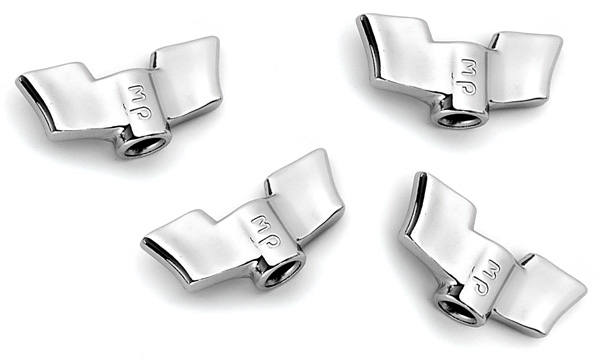
Wingnuts, (or butterfly nuts), have what looks like “T” handles, (small-big), that you can turn to tighten without the use of tools.
Some places where you will see wingnuts are the drums are your drum stool, tom arms, cymbal stands, floor toms, (with metal legs) and snare stand.
Felts
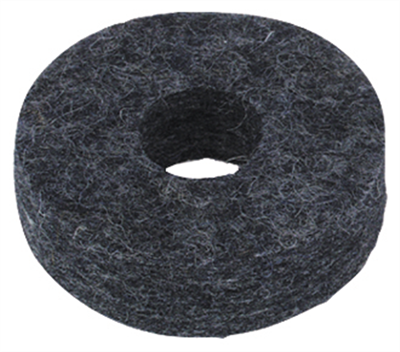
Felts are a compressed type of fabric, sometimes wool, that is used to prevent metal against metal in non high tension areas. An example of this would be under and or on top of your cymbal just before the wingnut.
Snare Wires

Snare wires, or snares, are located underneath your snare drum. With the snare strainer engaged, the snares will give you that, (for lack of a better word), crisp or snare sound. They run the length of your snare drum and in some rare cases even go past the shell of the drum. The snares are connected between the snare butt plate and snare strainer. To secure the snares to the butt plate or snare strainer, either high tension string or plastic/fabric straps are used.
The looser the tension the more buzz you will hear. Over tightening will choke the sound of the drum.
Snare wires range from 8-42. With few wires, you will generally get a tighter snappier response. More wires may give you a fuller fatter response but at a risk of hearing more buzz.
Snare Strainer
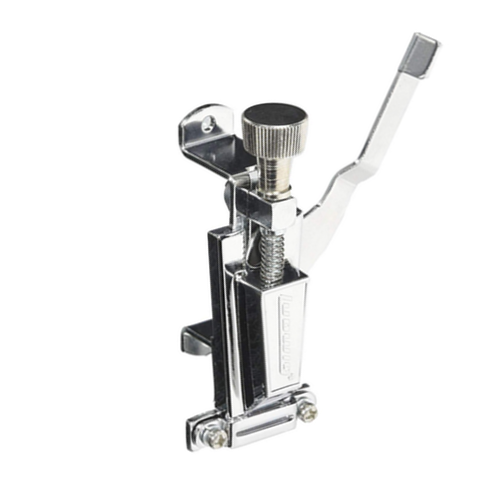
The snare strainer, sometimes referred to as throw-off, is to tighten or loosen the snares against the bottom head. Some strainers are made from brass, chrome or coated with white or black.
Rims, Drum Hoops
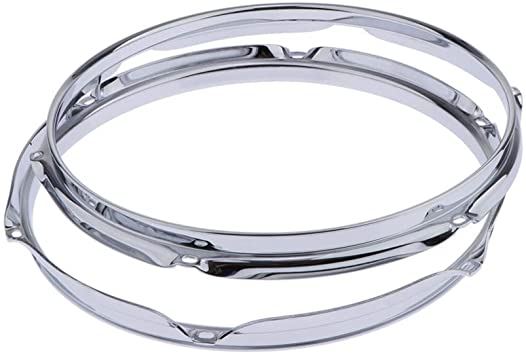
Most drum hoops are constructed with metal and some hoops are made of wood. Not only the bass drum but all toms and snares as well. Definitely a blast to play on wood hoops! Draw back, is with high tension drums, (snare), they are more susceptible to warping or cracking.
With metal hoops we have a few different types that will yield different sound characteristics.
We have Single-flanged, triple-flanged and die-cast.
Single-flanged
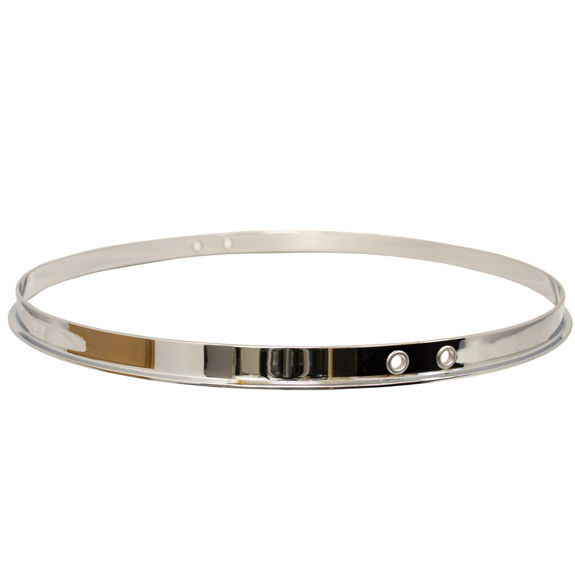
Single-flanged hoops have a more open airy feel, and the sustaining is very long.
Triple-flanged
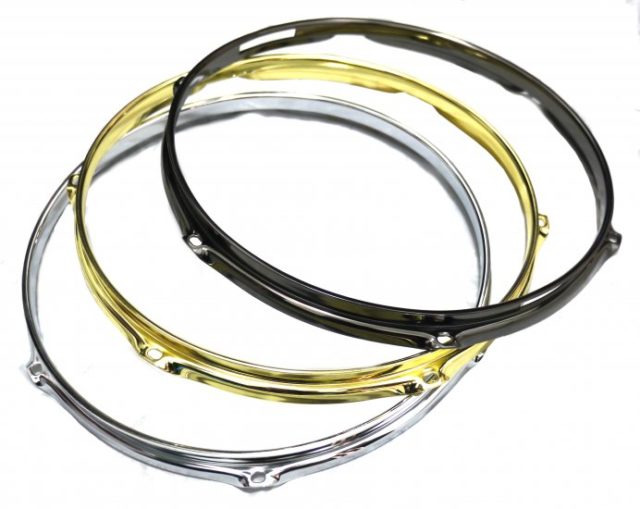
Triple-flanged hoops have a less open sound the the single-flanged, and has a shorten sustain.
Die-cast
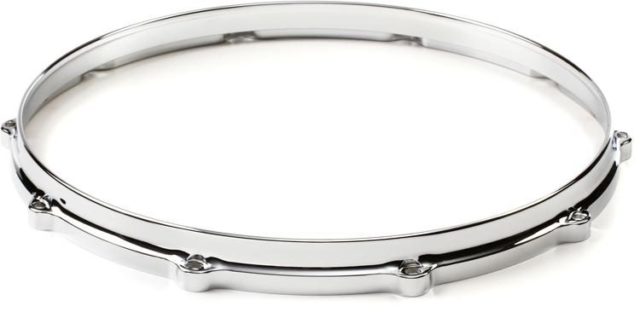
With die-cast hoops, they give you a more focused controlled sound with the ability to yield an incredible rimshot without a lot of sustain.
Internal & External Muffling
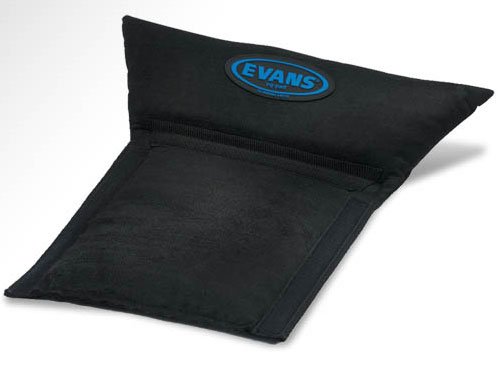
Internal and external muffling can be used to control a drum’s overtones and resonance..
Dampening materials can depend on the drum, but her are a few examples of what is commonly used.
Muffling Ideas
Bass Drum – Pillow, soft foam, shredded up newspaper
Snare Drum – O-rings, duct tape, moon gel
Toms – O-rings, duct tape, moon gel
Some drums even have built in damping mechanisms. These muffling systems, when tightened, push up against the drum head reducing the amount of resonance.
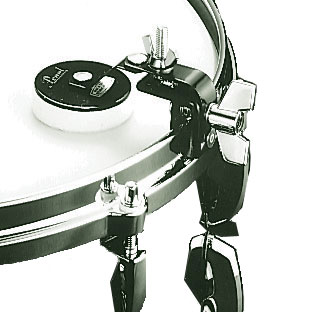
Air Vents
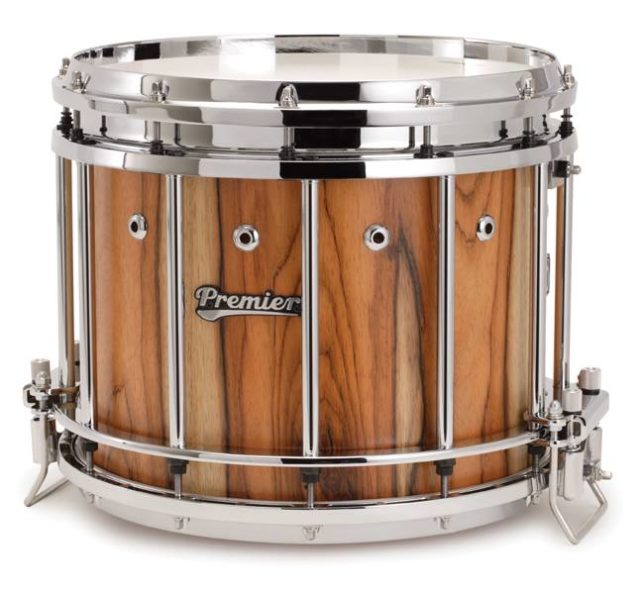
An air vent allows the air to escape the drum. This helps to prevent the drum from choking and allows it to breathe. It also gives the drum a bit more volume, or a lot depending on the size of the vent hole. You’ll notice with snare drums that have large vent holes, they generally sound a lot louder.
Tom Arms
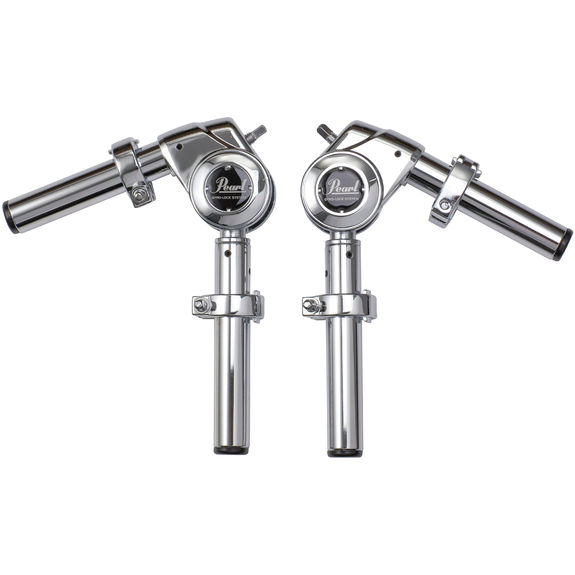
Tom arms mount the toms to the bass drum or a stand. They come in various diameters and lengths with L-rod or ball type arms. Generally speaking, the ball type rods, (most common with Yamaha), enable you to be more precise with where you want the tom.

